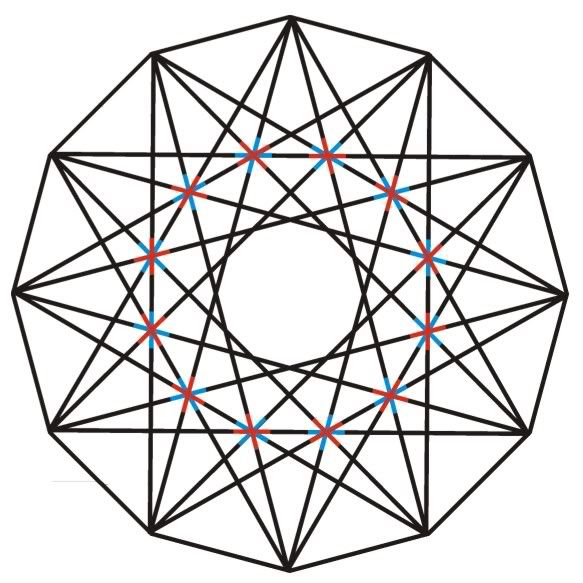I am needing some help from someone highly intelligent (It has been a long time since I thought about geometry). I am working on adapting my board game to different player counts. I cannot visualize a way to structure my board and I am sure it has been done before or someone here can figure out a great solution.
Right now, I have a 4 player game on a square board, with each player starting in their own corner. The board is a street map. It is a mirror image (four quadrants). Each starting location is equally spaced and has the exact same advantages and disadvantages (intersections, double blocks, unbuildable blocks, players on both sides).
It is pretty easy to change that board to a 2 player game with balanced starting locations (opposite corners). My problem is making a 3 player game. I really want to make 6 starting locations, so I can have a 2, 3, 4, or 6 player game. I am thinking of a 2 sided board, one side being a base 2 game, , the other side a base 3 game. For the life of me, I cannot put together a 6 player, mirror image board with each staring location balanced. The players need to start at the outer rim. The blocks need to be square and most of the streets need to be long and straight. I need to have some streets go completely from one side of the board to the other.
Hopefully you understand what I am trying to do. Let me know if you have some ideas of how I can build my city map into a hexagon with each starting location exactly the same.










Several great ideas. I will see if I can clarify a little more to give you a better understanding. I am looking to make two seperate boards (actually opposite sides of the same board). The one for 2 and 4 players is simple. The one for 3 or 6 players is the one I am having trouble with. I can certainly make it a hexagon, but the grid inside still needs to be squares. I am not adept like Seo at puting pictures together (VERY thought provoking by the way), so I will try to describe it.
I pulled out my Acquire board to play around with examples. Take a grid labeled columns 1-8, rows A-G. Black out 1A, 2A, 1B in the upper left corner, 7A, 8A, , 8B in the upper right, 1F, 1G, 2G in the lower left, and 7G, 8f, 8G in the lower right. Now I have a pseudo hexagon (ok, more like an octogon which is why I need help) and a square grid. Start locations in 3A, 6A, 1D, 8D, 3G, and 6G. This is not perfect, and too small, but close to what I am looking for.
My 4 player board is 8x8 blocks. My 6 player board can have have around 84 city blocks in the playing area. More or less blocks can be balanced by puting in undevelopable blocks (park or plaza). I seem to think that the larger the grid, the easier it is to solve my problem.
To add to the complexity and possibly give you an idea to build on later, I have one other aspect to my board design that I will put together when I solve this problem. I am working on an expandable, modular board. A small square (possibly 6x6) would be a 2 player board on one side and a 3 player board on the other. A larger board (8x8 with a 6x6 hollow center) would fit around the outside to make a 4 player game. The back side of the outer board might be 9x9 or 10x10 to make a 6 player game. Additional centers or outer rings could be used to change the map and add different playing fields.
Thank you all for your suggestions. If what I have makes sense and you have other suggestions, I welcome them all. I may have to settle for good enough, and balance through playtesting and one of the bidding/selecting methods suggested.
One other thing, is there a thread describing how to add pictures to my post? What sofware are people using to chart their ideas?